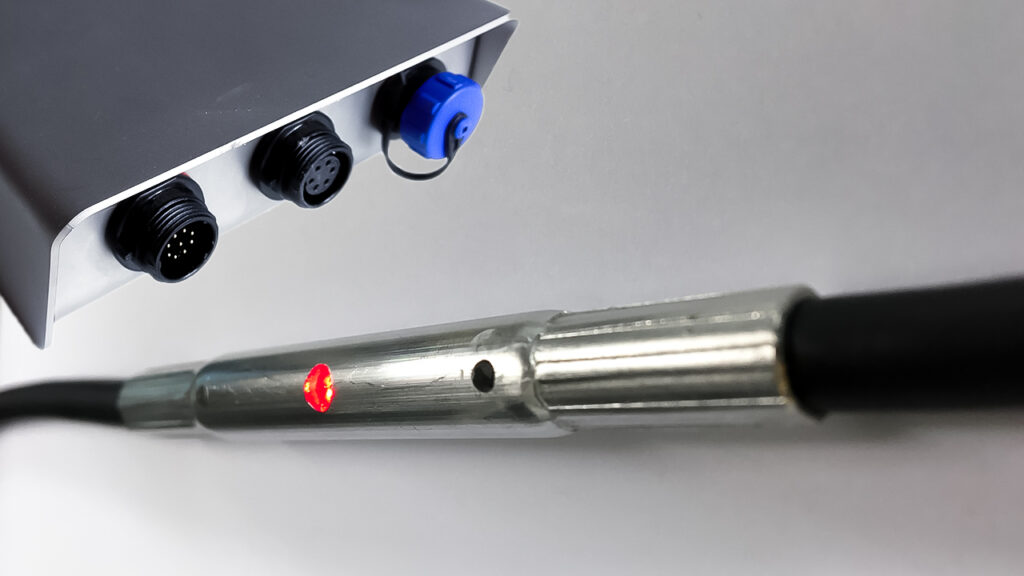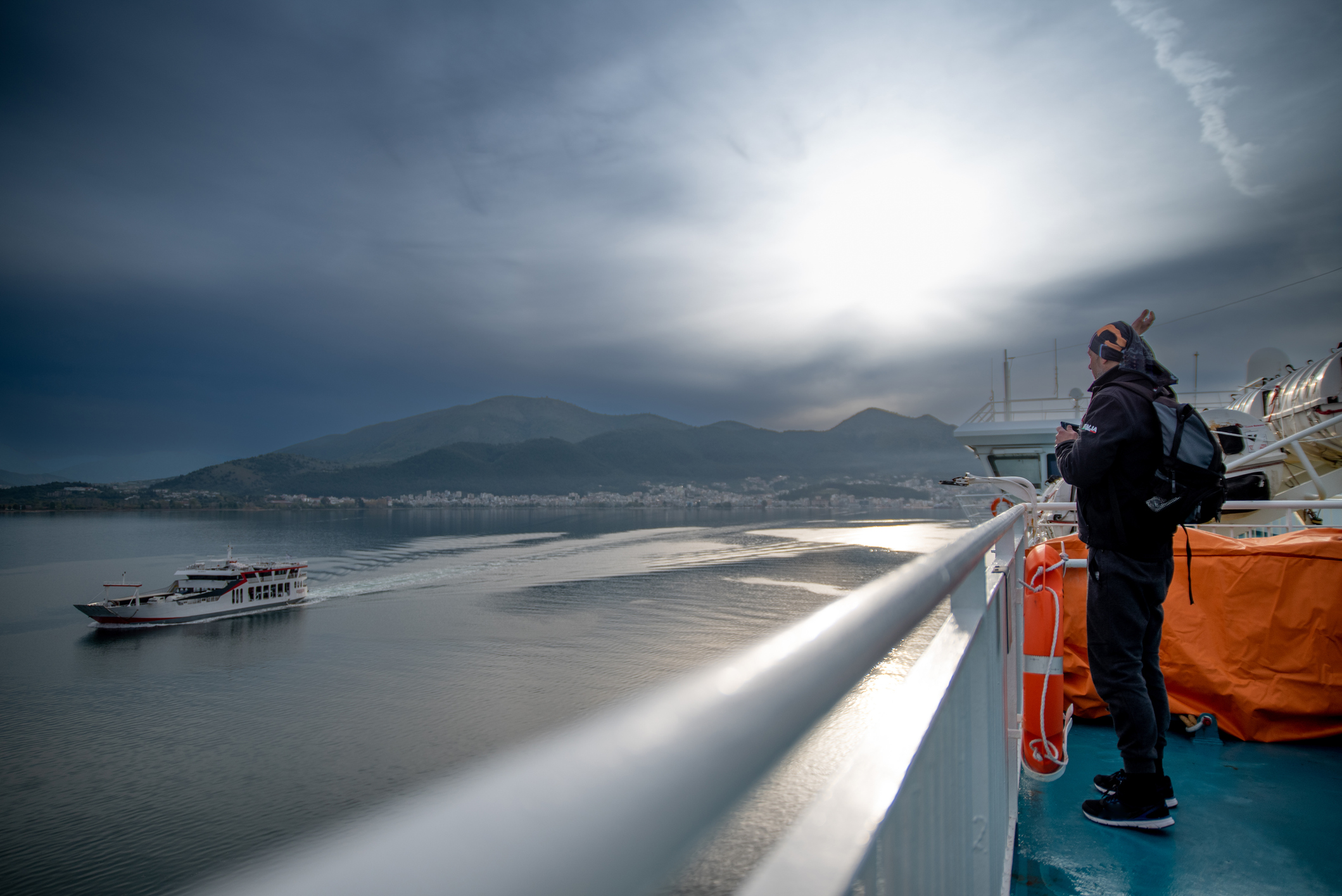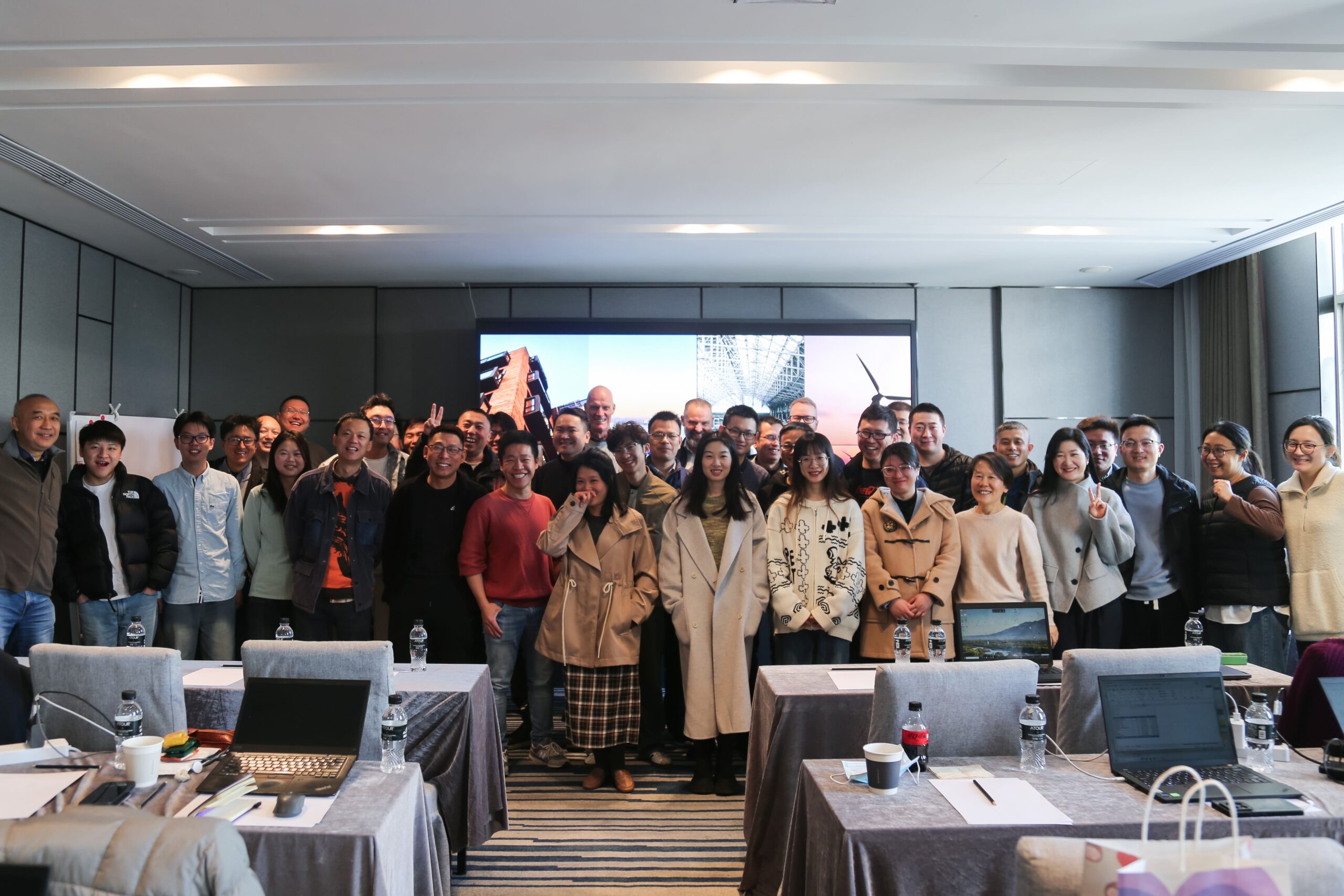Bright days ahead for container shipping safety: Unveiling next-gen safety tech
From regulators, insurers and ship owners, a collective demand for innovation for container ship safety has emerged. Consilium Safety Group, known for its innovative spirit, is preparing to answer this call with a groundbreaking product that will enter the market in 2025.
Almost every shirt we wear, every gadget we use has made a journey across the seas, a testament to the container shipping industry’s role in knitting the global economy together.
These colourful containers move more than 90 per cent of global trade. Capable of carrying over 24,000 containers, today´s ships are carrying an incredible 1 500 percent more containers than they were in the late 1960s.
Yet, as these ships swell in size, now stretching to the lengths of four football fields, they carry not just cargo but a potential risk of fire. A peril that grows with every container added to their load.
Thobias Ernfridsson, the Chief Technology Officer at Consilium Safety Group, sits at the heart of efforts to mitigate this risk.
“The expansion of container transportation is undeniable,” he states, “and with it, the risk of fire escalates, posing a significant threat to goods, ships, and more importantly, human lives and the environment.”
A stark reality
This recognition is echoed in the stark figures of the 2023 Cargosafe study, commissioned by the European Maritime Safety Agency (EMSA), which highlights the potential risk associated with the median operation of these ships.
The study shows a ship faces potential losses including fatalities, cargo, the ship itself, environmental damage, and salvage costs. As insurance premiums for container shipping rise by 55 per cent, reflecting the increased risks of fire and cargo loss, the industry is at a crossroads.
“With the values aboard these vessels soaring, insurance costs can account for the third highest operational expense, after fuel and crew,” Ernfridsson explains.
Yet, amidst the calculus of risk and premium, Ernfridsson sees a silver lining: “Cut through the risk, and you slice through the premiums. It’s straightforward economics but underpinned by a complex challenge.”
Innovation at the helm
In the wake of disaster, innovation often follows, spurred by necessity and the collective will for change.
”Accidents are never good, but it is usually the way that triggers a desire for change”, says Ernfridsson.
This sentiment is echoed across the industry, from insurance companies and ship owners to ports and suppliers, all recognizing the need for a more digital and AI-driven approach to early detection and fire prevention.
The International Maritime Organization (IMO) has responded with plans to introduce new fire safety regulations by January 2028. Aiming to address the increased fire risks brought on by container ships and the misdeclaration of hazardous goods.
”My understanding is that IMO’s wish or requirement is that safety players like Consilium should embrace digitalisation a bit more on board,” says Ernfridsson.

The revolutionary TMS technology
At the heart of Consilium Safety Group’s response to this call is the strategic acquisition of Radicos, a vanguard in linear heat detection. The acquisition has birthed the innovation of a Temperature Monitoring System (TMS), a product formerly under Radicos before its rebranding and integration into Consilium’s fire, flame, and gas safety solutions.
TMS represents a fundamental shift in how fire safety is approached at sea. Leveraging a sophisticated network of sensors to monitor for the slightest anomalies in temperature that could indicate a possible fire. Promises early detection of fire risks, potentially saving lives, cargo, and ships from disaster.
“This solution allows quick tracing if for instance, one container is at 18 degrees Celsius, and the adjacent one is 35 degrees Celsius. Using our safety management system software, SMiG, operators receive valuable information when a conflicting pattern is identified. With this solution, incidents are detected in an early stage, even at ambient temperatures. It’s a true game-changer for safety within the container shipping industry”, highlights Thobias Ernfridsson.
The robustness of the system is further underlined by real-world testing. It has been rigorously tested in harsh environments, including various stressors such as saltwater exposure, vibrations, wind and temperature variations. The technology has proven to be highly reliable and effective in the most demanding maritime conditions.
With a new round of real-world trials planned for early 2025, and the first ship deliveries and installations expected later that summer, the anticipation within the marine community is palpable.
“It is in everyone’s interest to bring this product to market as quickly as possible. We have listened to our customers, insurers, and the authorities. Based on this, we have developed this outstanding product,” says Ernfridsson, reflecting a sentiment that goes beyond commercial interests and touches on collective responsibility for safety at sea.
”Simply said, there won’t be as many fires, everyone will be happy”, he concludes.
The expansive potential of TMS
The potential applications for TMS extend far beyond container ships, with interest from sectors ranging from car carriers such as RoRo ships to agriculture.
“This technology is unique,” says Marcus Andersson, CCO at Consilium, “and its ability to monitor temperature changes has a wide range of applications, from detecting heat increases in cars on a car deck to monitoring the well-being of livestock.”
He explains:
“It was our customers who led us to expand our vision,” Andersson reveals, his voice a testament to the collaborative spirit that drives this innovation.
“They nudged us to see beyond the immediate. And now, car carriers are on the horizon. It´s not every day you hear enthusiasm for monitoring heat variations below cars at a car deck, but here we are, in dialogue with shipping companies”.
Our conversation takes an unexpected detour through the countryside, to a chicken farm, where the potential of TMS to save lives takes on another dimension. “Imagine hanging a cable, a simple act, and suddenly you’re not just monitoring chickens, you’re actively protecting them.
The rollout of TMS will be methodical, phased, and sensitive to the ecosystems it enters. “We start with containers and car carriers, yes, but it’s about the order of things,” Andersson explains.
“The fire alarm, the gas alarm, and then this – our solution. It’s a sequence designed not just for implementation, but for integration, to become a support system that is as seamless as it is essential”.
Talking to Marcus Andersson, the essence of TMS as more than just a product but a solution comes to the fore. It’s a technology born from the need to solve a critical problem that expands its embrace to offer protection and peace of mind.
”We can act as a supplier with support. We want to be close to our customers, to meet their challenges, which is why this was created,” he says, summing up the essence of their mission.
”We’re not just engineers and salespeople, we’re partners in safety, wherever that journey might lead us”, Andersson concludes.
TMS technology in brief:
Basic Concept:
Imagine the TMS as a highly sensitive digital thermometer spread throughout a ship, constantly checking the temperature of every container on board. This system is like a network of watchful eyes, designed to notice even the smallest rise in temperature that could indicate a fire risk.
How It works:
The system uses a series of advanced sensors placed around the ship in direct proximity of the containers. These sensors continuously monitor temperatures and send this data to a central system that execute advanced energy flow analysis onboard the ship. It’s akin to having a network of smoke detectors, but instead of detecting smoke, they’re looking for unusual heat.
Detection and response:
Should one container get warmer than usual, perhaps due to a malfunctioning electronic device, a battery or a chemical reaction, the TMS quickly spots this temperature anomaly. The system then alerts the ship’s crew to the exact location of the potential hazard, allowing them to take immediate action, such as investigating the issue or initiating firefighting measures, long before a small problem turns into a major fire.
Integration with existing systems:
TMS isn’t a standalone service; it’s integrated with the ship’s overall safety management system. This means it works in harmony with other safety measures onboard, like fire extinguishers and alarms, to provide a comprehensive safety net.
Benefits beyond early detection:
The true game-changer of this system lies not just in detecting potential fires but in its ability to provide peace of mind. For ship operators, it means reducing the risk of losing cargo or, more importantly, risking lives. For insurance companies, it’s about lowering the chances of costly disasters. And for the global economy, it ensures that the goods we rely on every day make it safely across the seas.


